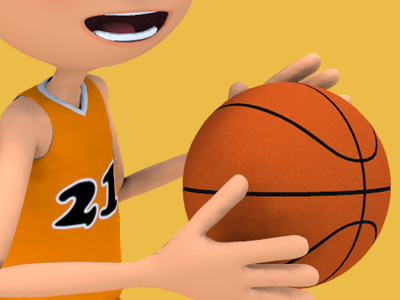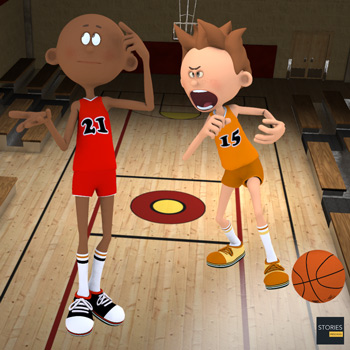Basketball

Basketball Fouls
An attempt to unfairly disadvantage an opponent through certain types of physical contact is illegal and is called a personal foul. These are most commonly committed by defensive players; however, they can be committed by offensive players as well. Players who are fouled either receive the ball to pass inbounds again, or receive one or more free throws if they are fouled in the act of shooting, depending on whether the shot was successful. One point is awarded for making a free throw, which is attempted from a line 15 feet (4.6 m) from the basket.

The referee is responsible for judging whether contact is illegal, sometimes resulting in controversy. The calling of fouls can vary between games, leagues and referees.

There is a second category of fouls called technical fouls, which may be charged for various rules violations including failure to properly record a player in the scorebook, or for unsportsmanlike conduct. These infractions result in one or two free throws, which may be taken by any of the five players on the court at the time. Repeated incidents can result in disqualification. A blatant foul involving physical contact that is either excessive or unnecessary is called an intentional foul (flagrant foul in the NBA). In FIBA, a foul resulting in ejection is called a disqualifying foul, while in leagues other than the NBA, such a foul is referred to as flagrant.

If a team exceeds a certain limit of team fouls in a given period (quarter or half) – four for NBA, NCAA women's, and international games – the opposing team is awarded one or two free throws on all subsequent non-shooting fouls for that period, the number depending on the league. In the US college men's game and high school games for both sexes, if a team reaches 7 fouls in a half, the opposing team is awarded one free throw, along with a second shot if the first is made. This is called shooting "one-and-one". If a team exceeds 10 fouls in the half, the opposing team is awarded two free throws on all subsequent fouls for the half.
When a team shoots foul shots, the opponents may not interfere with the shooter, nor may they try to regain possession until the last or potentially last free throw is in the air.

After a team has committed a specified number of fouls, the other team is said to be "in the bonus". On scoreboards, this is usually signified with an indicator light reading "Bonus" or "Penalty" with an illuminated directional arrow or dot indicating that team is to receive free throws when fouled by the opposing team. (Some scoreboards also indicate the number of fouls committed.)
If a team misses the first shot of a two-shot situation, the opposing team must wait for the completion of the second shot before attempting to reclaim possession of the ball and continuing play.
If a player is fouled while attempting a shot and the shot is unsuccessful, the player is awarded a number of free throws equal to the value of the attempted shot. A player fouled while attempting a regular two-point shot thus receives two shots. A player fouled while attempting a three-point shot, on the other hand, receives three shots.
If a player is fouled while attempting a shot and the shot is successful, typically the player will be awarded one additional free throw for one point. In combination with a regular shot, this is called a "three-point play" or "four-point play" (or more colloquially, an "and one") because of the basket made at the time of the foul (2 or 3 points) and the additional free throw (1 point).

SPORTS

RESOURCES
This article uses material from the Wikipedia article "Basketball", which is released under the Creative Commons Attribution-Share-Alike License 3.0.
© Stories Preschool. All Rights Reserved.












